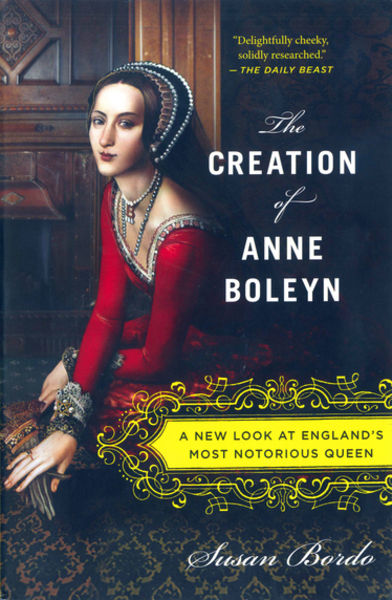Writer shows queen’s many faces
Published 1:00 am Sunday, October 11, 2015

- sunread_book_queen
“The Creation of Anne Boleyn: A New Look at England’s Most Notorious Queen,” by Susan Bordo. New York: Houghton Mifflin Harcourt, 2014. 345 pages, $15.95 (paperback).
The Tudor dynasty of England, especially Henry VIII and his queens, have fascinated people from the 16th century to the present. Anne Boleyn has attracted a particularly high level of attention.
Trending
In recent years, popular culture has embraced Philippa Gregory’s novel “The Other Boleyn Girl” (2003) and the related film (2008), the Showtime series “The Tudors” (2007-10), Hilary Mantel’s novels “Wolf Hall” (2009) and “Bring Up the Bodies” (2012) and the television miniseries “Wolf Hall” (2015). Susan Bordo, the Otis A. Singletary Professor of Humanities at the University of Kentucky, joined in and made Anne a subject of her scholarship.
“The Creation of Anne Boleyn” is not a biography of the queen. Instead, it is a study of how she was viewed by her contemporaries and during the eras that followed. The book is divided into three parts. The first part “Queen, Interrupted” comprises about half the book and is a series of chapters that examines the available evidence concerning Anne and how it has been variously interpreted. The surviving historical evidence about her is sparse. Personal letters or diaries are lacking. We don’t even know the exact year of her birth.
Much of the surviving material was produced by her enemies. The most significant was Eustace Chapuys, the imperial ambassador to England and an ardent supporter of Katherine of Aragon. He referred to her as “the concubine” and definitely cast her in the role of the other woman in Henry VIII’s divorce from Katherine of Aragon. George Cavendish, a supporter of the fallen Cardinal Wolsey, was another of her detractors. These men presented many derogatory and often salacious details about Anne.
Historians have long recognized the biases of these sources but have often used them uncritically. Bordo correctly points out that Anne was not a great beauty and she was a brunette. Nor was she the original cause of Henry VIII’s divorce. The king had long contemplated divorce long before he met Anne. Bordo suggests that Anne’s attraction for Henry VIII was the strength of her personality and intellect. She was the king’s partner in politics, which went against the generally misogynist culture of Renaissance males. She was also an advocate of ideas of the early Reformation, which did not endear her to conservatives.
Although Anne’s detractors claimed she manipulated Henry VIII’s lust, Bordo scoffs at that contention. Henry VIII had plenty of opportunities for mere physical sex. His strong attraction to Anne was based on something more. Bordo also rejects that the marriage of Henry VIII and Anne collapsed because of her failure to produce a male heir. Instead, she was a victim of a combination of a vicious court culture, political maneuvers and bad timing.
By 1536, public opinion was running against Henry VIII, so Anne made a perfect scapegoat. A whispering campaign brought out all sorts of dubious accusations of multiple adulteries, including incest. Bordo rejects that any of these charges were true, but still they provided the basis for Anne’s condemnation and death. The execution of a queen was unthinkable, but Henry VIII went through with it. That raises the question of why Henry VIII did such a thing. Bordo concludes that Henry VIII was a borderline personality vested with tremendous power. That made him most dangerous to those who were close to him, as Anne tragically discovered.
Trending
In the second part, “Recipes for Anne Boleyn,” the author looks at portrayal from the time of her death through most of the 20th century. In Elizabethan times, her reputation rose since it was safe to take a complimentary view of Anne when her daughter Queen Elizabeth ruled. Protestants recognized her as a great supporter of the Reformation and an intellectual in her own right, an image frequently glossed over by novelists. Fictional portrayals of Anne were generally positive, and she was shown as an innocent victim pulled into Henry VIII’s political games.
The third part, “An Anne for All Seasons,” looks at the depiction of Anne in various recent novels and films. She begins by looking at “Anne of the Thousand Days” (1969) with Genevieve Bujold’s spunky Anne. The Tudors series on Showtime is also discussed, particularly how it promoted a wave of fascination about Anne among many young women. Bordo provides many fascinating details about the actress Natalie Dormer’s depiction of Anne. She also discusses Philippa Gregory’s “The Other Boleyn Girl,” where Anne becomes a 16th-century mean girl. It is a revival of highly prejudiced tales of Eustace Chapuys.
Bordo has done a wonderful job of presenting the many faces of Anne through the ages while presenting convincing arguments for which face was the real one. Her conclusions are solidly based on perceptive and critical interpretations of the historical evidence. Bordo rejects unwarranted speculation and sensationalism.
As a historian, the author shows herself to be far better than some prominent historians of Tudor England, with Eric Ives and David Loades being outstanding exceptions. Readers will delight in Bordo’s lively style of writing that blends smoothly academic and popular prose. “The Creation of Anne Boleyn” joins a literary tradition of presenting the history of cultural images of women such as Marina Warner’s “Alone of All Her Sex: The Myth and Cult of the Virgin Mary” (1976) and Lucy Hughes-Hallett’s “Cleopatra: Histories, Dreams, and Distortions” (1990).
— Reviewed by Ronald Fritze, dean of the College of Arts and Sciences and professor of history, Athens State University in Alabama.
— Editor’s note: Susan Bordo is the featured speaker at Western Kentucky University Libraries’ Far Away Places Series at 7 p.m. Thursday at Barnes & Noble Booksellers on Campbell Lane.







